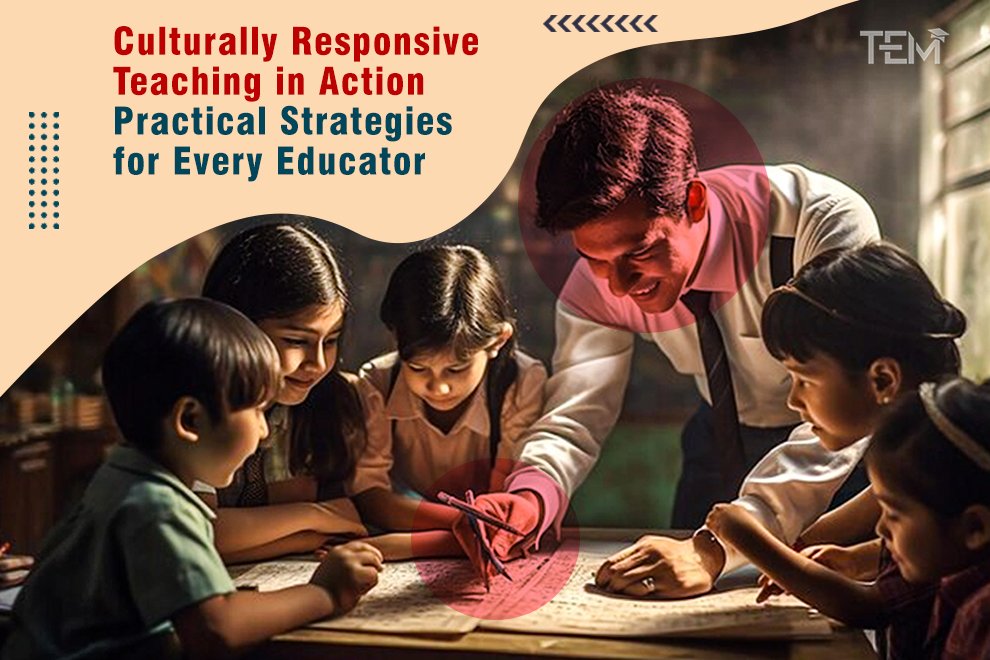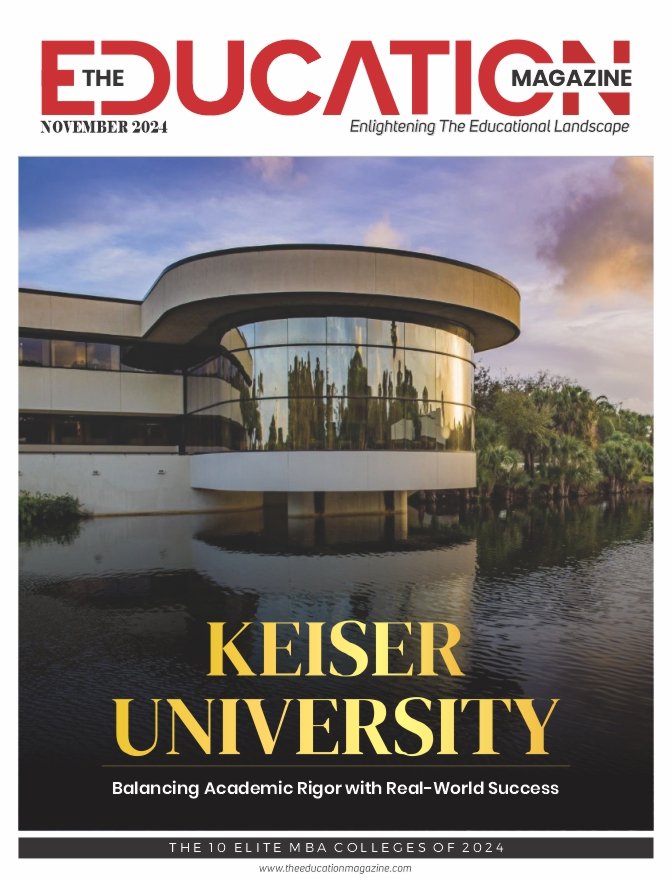Imagine a classroom where every student feels valued and empowered. Where their unique background isn’t just acknowledged but celebrated and woven into the learning experience. This is the power of culturally responsive teaching (CRT).
In a world where 80% of US educators face classrooms brimming with diverse cultures, traditional methods fall short. But what if you could unlock the full potential of your students by embracing their individuality?
In this blog, we’ll equip you with practical CRT strategies you can implement today. Get ready to transform your classroom into a vibrant and inclusive space where every student thrives. Let’s explore!
What is Culturally Responsive Teaching?
Culturally responsive teaching is a research-based approach to teaching. Moreover, culturally responsive teaching depends on a learning environment that affirms our students and helps them feel included, validated, valued, and safe. It connects students’ customs, characteristics, experiences, and perspectives as tools for better classroom instruction. Consequently, these connections help students access the rigorous curriculum and develop higher-level academic skills.
Many theories exist about the origins of learning gaps. Still, research has shown that low-income students and students of color tend to have low expectations for academic success set for them frequently.
To address these learning gaps between students of different backgrounds and address inequities in the classroom. Furthermore, academic scholars in education developed teaching methods and strategies to foster a learning environment where students are represented.
6 characteristics of Culturally Responsive Teaching
1. Comprehensive:
- Teaches lessons by connecting them to students’ cultures and backgrounds, making learning more interesting and relevant.
- Uses things students already know and love from their own cultures to help them learn new things.
2. Validating and affirming:
- Shows students that their cultures and experiences are valuable and important.
- Encourage students to feel proud of who they are and where they come from.
3. Empowering:
- Gives students a chance to be leaders in the classroom and share their cultures with others.
- It assists students to see themselves as successful learners.
4. Multidimensional:
- Creates a classroom environment that feels welcoming and safe for everyone, regardless of background.
- Uses different teaching methods so all students can learn in the way that works best for them.
- Fairly evaluates students’ work, considering their strengths and backgrounds.
5. Transformative:
- Can change the way both teachers and students view learning and the world around them.
- Encourages creativity and critical thinking in a classroom setting.
6. Liberating:
- It guides students to see beyond stereotypes and embrace all cultures.
- Gives students the confidence to be themselves and reach their full potential.
7 Strategies for Creating a Culturally Responsive Classroom
Students in today’s schools have a diverse range of experiences and backgrounds. An approach called Culturally Responsive Teaching (CRT) embraces this diversity and makes use of it to make the learning environment more effective and interesting for all students.
You can use the following important CRT techniques in your classroom, along with some examples to show how they work:
1. Building on Prior Knowledge
- Strategy: Students aren’t empty vessels waiting to be filled with knowledge. They come to class with unique experiences and understanding. CRT encourages drawing on this “prior knowledge” to enrich classroom discussions.
- Example: Instead of simply lecturing about the Civil Rights Movement, facilitate discussions where students can share how similar movements for social justice played out in their own cultures. This creates a deeper connection to the material.
2. Making Learning Contextual
- Strategy: Tie abstract concepts to the realities of students’ lives and communities. This makes learning more relevant and engaging.
- Example: When reading a historical text, discuss its relevance to current events or issues in the students’ local community. Students can then create projects that explore these parallels, fostering a deeper understanding.
3. Inviting Guest Speakers
- Strategy: Guest speakers from diverse backgrounds can bring real-world experiences and passion to subjects like history, geography, or social studies.
- Example: A veteran can share a firsthand account of their service, offering a more vivid picture than a textbook. This can be even more impactful if the veteran shares a cultural background with some students, motivating them through shared experiences.
4. Empowering Student Choice
- Strategy: Encouraging students to propose project ideas fosters ownership and builds confidence.
- Example: Offer students the opportunity to pitch project ideas based on their interests and cultural backgrounds. This allows them to showcase their strengths and existing knowledge while meeting academic standards. This can also inspire future culturally responsive lessons and assessments.
5. Leveraging Cultural Capital
- Strategy: “Cultural capital” refers to the knowledge, skills, and experiences students gain from their families and communities. CRT encourages utilising this valuable resource in the classroom.
- Example: In an English class with ESL students, choose a book that allows them to connect with the story and feel like experts. This could be a book about a migrant worker’s child, if some students come from a similar background. By drawing on their cultural experiences, students feel valued and contribute their unique perspectives.
6. Creating a Culturally Inclusive Space
- Strategy: Examine your classroom environment. Does it reflect the diversity of your students? Books, posters, and bulletin boards should all represent a variety of cultures and backgrounds.
- Example: Ensure your classroom library has books by diverse authors and featuring characters from different cultures and socioeconomic backgrounds. This sends a message of value and inclusion to all your students.
7. Building Relationships
- Strategy: Positive student-teacher relationships are essential for fostering a sense of value and respect in the classroom.
- Example: Take time to get to know your students on a personal level. Learn about their interests and backgrounds. Celebrate cultural holidays and traditions throughout the year. This builds trust and establishes a safe space for learning where all students feel seen and valued.
Challenges and Solutions of Culturally Responsive Teaching
Let’s start with the challenges:
- Challenges in Implementation: Culturally responsive teaching faces practical challenges such as a lack of enforcement of culturally relevant teaching methods and the tendency to view students as individual units rather than as part of their cultural groups.
- Need for Adaptation in Teaching: New teachers must learn to adapt their curriculum, methodology, teaching methods, and instructional materials to connect with students’ values and cultural norms. This requires preparing reflective practitioners who can connect with diverse students and their families.
- Changing Student Demographics: The student population in America’s classrooms is becoming more racially and ethnically diverse. Increasing diversity, coupled with disconnects in teacher and student identity, can lead to a non-student-first approach that reduces students to cultural differences. Furthermore, it highlights the need for culturally relevant teaching to effectively educate a diverse student population.
What could be the solutions?
- Ongoing Professional Development: Schools can invest in professional development programs that equip teachers with the tools and knowledge to teach across cultures. Workshops on cultural competency, unconscious bias, and integrating diverse perspectives can be immensely helpful.
- Collaboration with Families and Communities: Building bridges with families and communities is essential. Teachers can invite guest speakers from different cultures, organize cultural events, or involve parents in curriculum development.
- Leveraging Culturally Relevant Resources: There’s a wealth of culturally relevant books, literature, and multimedia resources available. Integrating these materials into lessons can make learning more engaging and relatable for students.
- Creating a Safe and Inclusive Classroom Environment: Culturally responsive classrooms are welcoming spaces where students feel comfortable expressing themselves and their backgrounds. Teachers can set clear expectations for respectful behavior and celebrate diversity.
Easily Accessible CRT Resources Available for Educators Include:
- Edutopia: Their goal is to completely change pre-K–12 education so that every student can successfully acquire and use the knowledge, skills, and attitudes needed to succeed in their studies, careers, and adult lives.
- Culturally Responsive: They have assisted in staff training across the country. They have worked in the field of cultural responsiveness in the classroom firsthand. Furthermore, they have influenced the way many teachers teach CLR in the classroom.
- ChangeKidsLives: Their main objective is to assist, encourage, and support others in becoming exceptionally skilled educators who will transform the lives of their kids.
- Mathematica: The goal of Mathematica is to enhance public welfare by employing the best available data and evidence. They use technology, social science, and data science to provide long-term solutions.
- Inclusive Schools Network: They are an online educational resource that offers tools and information to support inclusive education practices for families, schools, and communities.
- Teaching for Diversity, Equity, and Inclusivity in the Classroom Series: This program is offered by the University of San Diego. It is available through the school’s Division of Professional and Continuing Education, meaning each course in this series is available completely online.
Success Stories
Mr. Davies’ strategy in his Los Angeles classroom brilliantly employed culturally responsive teaching (CRT) by incorporating diverse perspectives on the American Revolution. Let’s take a deeper look!
- Partnership with Local Resources: Mr. Davies recognized the limitations of a single narrative and sought a richer historical tapestry. Transition: To achieve this, he partnered with the Los Angeles Museum of Native American Cultures, bringing in local expertise.
- First-hand Accounts: By arranging a virtual session with tribal elders, students directly encountered perspectives often missing from traditional narratives. This challenged their understanding and sparked critical thinking. Transition: Consequently, this interactive experience allowed students to engage with primary sources firsthand.
- Broadened Understanding: Hearing from tribal elders exposed students to the impact of the Revolution on Native American communities. This broadened their historical awareness and fostered empathy for a different viewpoint. Transition: Consequently, this exposure facilitated a more nuanced understanding of the revolution’s effects on diverse communities.
In just one lesson, Mr. Davies used CRT to provide his diverse student body with a more comprehensive and deeper perspective of the American Revolution. Transition: Thus, through the strategic integration of diverse perspectives, Mr. Davies effectively enhanced his students’ learning experience.
Conclusion
Culturally responsive teaching (CRT) isn’t a one-size-fits-all approach. It’s a continuous journey of learning about your students, celebrating their backgrounds, and creating a classroom that empowers everyone to thrive.
In this blog, we offer practical strategies to get you started. But the true power of CRT lies in its ongoing exploration. How can you further personalize learning? What resources can you tap into within your community? By embracing these questions and fostering open communication with your students, you can cultivate a classroom that is as unique and vibrant as the learners themselves.










